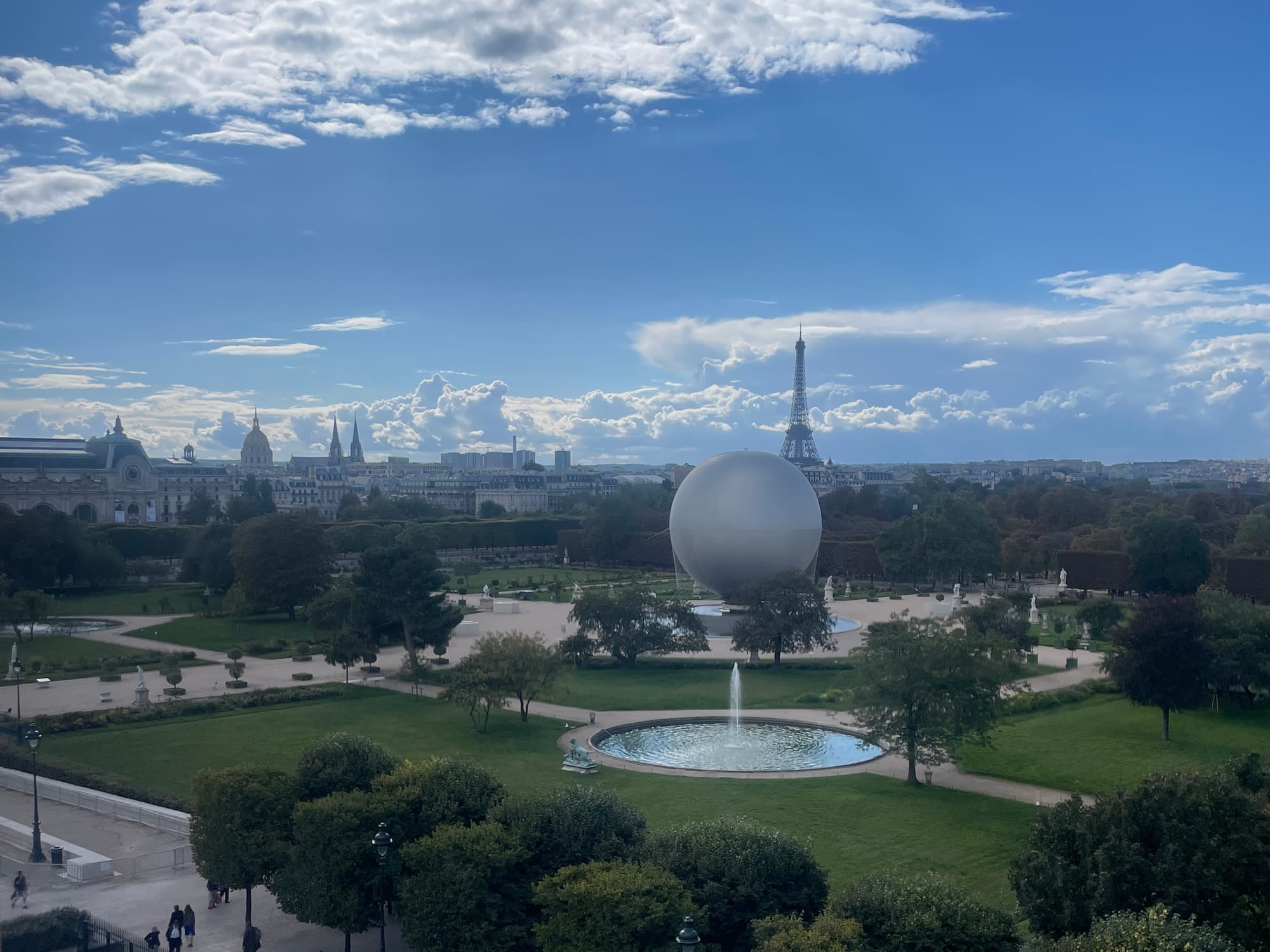The History of the Fashionable ’Parisienne’💄
Yesterday, I had the pleasure of paying a visit to the Musée des Arts Décoratifs to see an exhibition called: "The Birth of Department Stores. Fashion, design, toys, advertising. 1852-1925." I've been wanting to go there for a couple of months already...

Salut !
Greetings from a surprisingly cold and autumnal Paris! According to the seasoned Parisians I've talked to over the last few days, we have a slight head start now to the crisp fall weather, as usually the weather gets colder only towards October. But I don't really mind, I still believe that Paris is beautiful in any weather.😁 Besides, apparently we should be getting still a few more warm days next week.
Yesterday, I had the pleasure of paying a visit to the Musée des Arts Décoratifs (which is located in one of the wings of the Louvre Palace) to see an exhibition called: "The Birth of Department Stores. Fashion, design, toys, advertising. 1852-1925." I've been wanting to go there for a couple of months already, but now I finally found a good moment to make it happen. The exhibit was nicely produced; not too big, not too small, and it gave me the chance to revise some things that I learned this spring at the Sorbonne on my courses about 19th century architecture and decorative arts. I actually made an assignment on the Bon Marché, which opened its doors in 1852 and was the first of the Parisian department stores. Other illustrious department stores include for example Le Printemps, La Samaritaine, Les Grands Magasins du Louvre and Les Galeries Lafayette. After the success of these stores, their commercial and aesthetic model has been copied to other cities all over the world — for example to Stockmann in Helsinki.
The exhibition sparked a couple of thoughts. First, I realized once again how much of our current Western society is a consequence of the innovations and changes initiated during the industrialization in the 19th century. We literally live surrounded by machines and products made in large quantities by machines, and it's hard to even imagine a life without electricity and most of the gadgets we depend on nowadays. And soon we'll maybe think the same way about AI — that how did we ever manage life without it!
Second, I gained some depth to my understanding of the concept of a 'Parisienne' and Parisian style. There was this following text on one of the walls of the exhibit that caught my attention:
"Garments bearing the store's name echoed the trends shown in magazines; they played a fundamental role in disseminating fashion trends and establishing the predominance of Paris. This phenomenon, encouraged in part by the progressive mechanization of the textile industry, contributed to a gradual democratization of fashion beginning in the Second Empire.
Advertising posters promoted the representation of 'La Parisienne', the constructed incarnation of the elegant; independent woman and fashion ambassador. On posters, she was an objectified projection of fantasies: 'La Parisienne started trends and, in a context of industrial production based on mass reproduction, established presonal taste, based on imitation and variation. She embodied the femininity of Paris, the city of entertainment, with which she shared the desire to seduce, and to delight.'"
(The citation in the last part of the text was taken out of a book called La Parisienne du Second Empire aux Années folles (2020, Paris: Honoré Champion) written by A-S and P-J Duffief.)
This citation confirmed for me that the concept of the 'Parisienne' and her clothing style isn't new at all, and that it has been used in marketing at least since the early 20th century. As we know, the idea of an elegant, independent, feminine and fashionable Parisian woman continues to beckon women to Paris and to adopt a Parisian clothing style wherever they live. The latest demonstration of the power of this concept is of course the success of the Netflix show Emily in Paris. Its devoted fan base has invaded Paris, and recently for example the restaurant Brasserie des Près that I pass by often.😅 Emily sat on its terrace in the opening episode of the new fourth season, so obviously it became another stop on the pilgrimage that the show's fans do all around Paris. I don't blame the production team of the series though for choosing the restaurant — it's very charming!
Even though the exhibition confirmed for me that the commercially attractive idea of a fashionable Parisian woman (and man) is around a hundred years old, I'd say that it can be traced even further than that. The concept must have taken some kind of a form already in the 1600's, when Paris initially took its position as the fashion capital of the world during the reign of Louis XIV (who's title 'the Sun King' in English makes me think of a cool rapper with golden chains on his neck or a mysterious chief of an indigenous tribe😆).
It's just fascinating how different ideas and fashions come and go, and some of them persist, like this idea of a stylish ’Parisienne’. And since this is such an interesting topic, I’ll develop these ideas a bit further next week.😉
Have a stylish week!
Bisous,
Elle
❣️Recent delights
- I’ve never watched Apple’s hardware and software release events before, but now I happened to stumble on the recent WWDC24 keynote event on Apple TV+. I skipped through it at 2x speed just to see what the event is like and saw once again how powerful their branding and marketing is. The brand feels fun, light and innovative. They truly know how to build excitement for the products and their software updates, and centralize it to Apple’s current CEO Tim Cook, and to Steve Jobs’ legacy as well. Apple is a prime example of a company where its founder acts as the key person of influence, similarly to the companies of Elon Musk, Jeff Bezos and Mark Zuckerberg. I found the event actually quite inspiring in terms of the innovation and technological breakthroughs that are happening largely thanks to AI. Still, there’s no denying the fact that the event and their way of presenting the different sections is just very American. The rhetorics they use feels sort of even gimmicky when comparing to the way of speaking for example here in France. It’s not a bad thing, but just a very distinct cultural difference.😄
